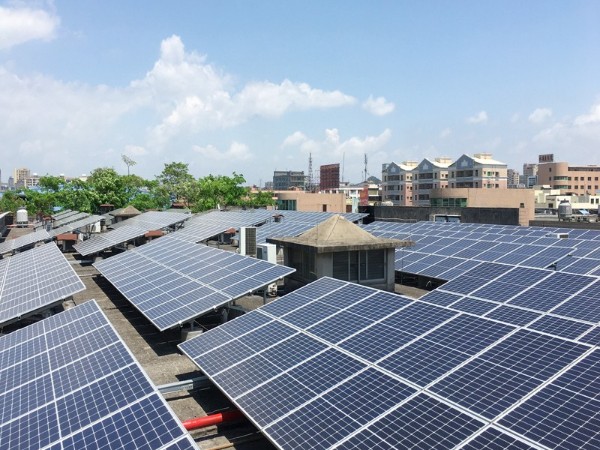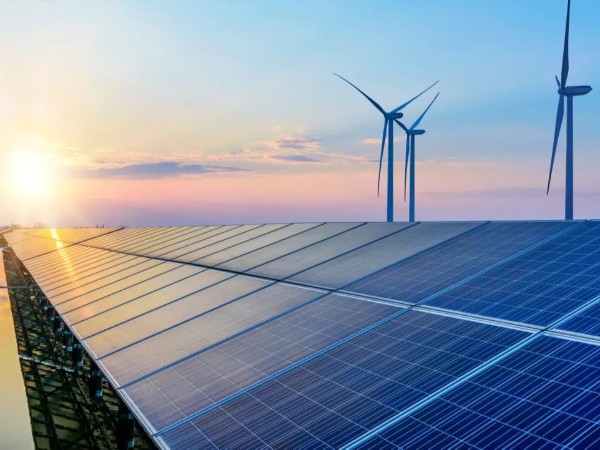当今,我国光伏发电装机规模不断迅猛扩张。仅今年上半年,新增装机便达到了7842万千瓦,累计装机规模更已突破4.7亿千瓦。与此同时,光伏发电产量也在不断攀升,消纳利用水平保持相对较高。上半年,全国光伏发电总量超过了2600亿千瓦时,同比增长约30%,平均利用率高达98%。
然而,随着技术和应用领域的不断突破,我国光伏产业已经迈入全新的境界。然而,与此同时,高比例的光伏能源接入也为光伏产业带来了新的考验。众多业界专家共识认为,积极探索新的光伏利用模式将成为光伏产业未来发展的重中之重。
展望未来,中国光伏行业协会秘书长王世江强调:“经过几十年的发展,光伏产业已经成为我国为数不多的具备国际竞争优势的产业之一,实现了从端到端的自主可控,而且有望成为高质量发展的典范,对推动我国能源变革发挥着至关重要的作用。
就产业本身而言,在2023年上半年,我国多晶硅、硅片、电池片和组件等主要环节的产量增速均超过60%;就国际贸易而言,在2022年,我国光伏产品出口额超过500亿美元,今年上半年更是达到了290亿美元,同比增长13%,这已经是出口的‘新三宝’之一;从市场应用来看,在2022年,我国连续十年位居全球新增光伏装机容量第一,今年上半年新增装机容量更是突破了7800万千瓦,同比增长达到了154%。
在专家看来,光伏产业已经取得显著成就,特别是在应对“双碳”目标的背景下,光伏产业前景光明。根据中国气象局数据,我国光伏资源总量约为1300亿千瓦,技术可开发量更是超过了400亿千瓦,为确保能源本质安全提供了有力基础。加大新能源的开发利用,促进各领域对新能源的比例提升,增强新能源对石油和天然气的替代作用,已经成为确保我国能源安全的必由之路。

然而,光伏产业的高速发展也带来了前所未有的挑战。传统能源电力系统结构下,一次能源需转化为电能并接入电网,而由于缺乏大规模、经济实用的储能技术,电力系统必须时刻保持供需平衡,这对高度不确定性的可再生能源利用构成了根本性挑战。
充分利用储能技术将成为实现可再生能源利用的关键。储能技术有助于实现能源系统供需的实时平衡,解决可再生能源不确定性带来的风电、光电以及水电等问题,以实现最大程度的可再生能源利用。
以新能源为主导的新型电力系统提出了我国电力系统发展的新方向,而配电网作为其中的一个环节,涉及居民用户,并将电能安全传输到千家万户,具有重要的基础设施地位。
在新的背景下,配电系统的角色也在发生重大转变。未来,配电网的发展将承担更多职责,它不仅是支持可再生能源消纳的支撑平台,还需要应对数亿电表计量数据等大量多样的信息接入。同时,配电网还需要成为多利益相关方参与的平台,以及电气化交通的服务平台。因此,为了适应未来配电系统的发展需求,需要在现有基础上进行改进,以满足低碳化、分布化、去中心化和数字化等新特点。
在面对未来的挑战时,多位专家强调,必须加快科技创新步伐,通过创新的利用模式来推动光伏产业的高质量发展。

未来,需要进一步推动光伏产业实现智能化、绿色化和高端化的转型,充分发挥新能源的优势。打造绿色低碳的光伏产品,通过技术创新推动产业升级,加速电池技术等领域的发展。同时,还应积极促进光伏与其他行业的深度融合,将光伏应用于建筑、交通、农业、畜牧业、沙漠治理等多个领域,实现多元化应用。
绿色化的能源电力系统势在必行,而经济实用的储能技术是实现可再生能源利用的关键。通过将氢能与可再生能源相结合,可以实现能源系统供需的实时平衡,解决可再生能源的不确定性问题,构建可复制的分布式零碳能源系统。这种以氢能为支撑的分布式零碳智能能源系统将会深刻改变能源结构,为未来的分布式数据中心、高速通信站点等提供零碳能源,为绿色、分布、市场为特征的能源革命做出贡献。
综上所述,光伏产业在我国已经取得重要的进展,然而也面临新的挑战。通过技术创新和利用模式的创新,我国有望推动光伏产业实现高质量发展,为可再生能源的可持续利用做出贡献。
特别声明
:星火太阳能
转载其他网站内容,出于传递更多信息而非盈利之目的,同时并不代表赞成其观点或证实其描述,内容仅供参考。版权归原作者所有,若有侵权,请联系我们删除。
Nowadays, the installed scale of photovoltaic power generation in China is constantly expanding rapidly. In the first half of this year alone, the newly installed capacity reached 78.42 million kilowatts, and the cumulative installed capacity has exceeded
470 million kilowatts. At the same time, the output of photovoltaic power generation is also constantly increasing, and the level of consumption and utilization remains relatively high. In the first half of the year, the total amount of photovoltaic
power generation in China exceeded 260 billion kilowatt hours, a year-on-year increase of about 30%, and the average utilization rate was as high as 98%.
However, with the continuous breakthroughs in technology and application fields,
China's photovoltaic industry has entered a new realm. However, at the same time, the high proportion of photovoltaic energy access has also brought new challenges to the photovoltaic industry. Many industry experts unanimously believe that actively
exploring new photovoltaic utilization models will become a top priority for the future development of the photovoltaic industry.
Looking ahead to the future, Wang Shijiang, Secretary General of the China Photovoltaic Industry Association,
emphasized that "after decades of development, the photovoltaic industry has become one of the few industries in China with international competitive advantages, achieving end-to-end autonomy and controllability, and is expected to become a model
of high-quality development, playing a crucial role in promoting China's energy transformation.
In terms of the industry itself, in the first half of 2023, the production growth rate of China's main links such as polycrystalline silicon,
silicon wafers, battery cells, and components exceeded 60%; In terms of international trade, in 2022, China's export value of photovoltaic products exceeded 50 billion US dollars, and in the first half of this year, it reached 29 billion US dollars,
a year-on-year increase of 13%, which has become one of the 'new three treasures' of exports; From the perspective of market application, in 2022, China ranked first in the world's newly added photovoltaic installed capacity for ten consecutive
years. In the first half of this year, the newly added installed capacity exceeded 78 million kilowatts, with a year-on-year growth of 154%.
In the eyes of experts, the photovoltaic industry has made significant achievements, especially
in the context of addressing the "dual carbon" goals, and the prospects for the photovoltaic industry are bright. According to data from the China Meteorological Administration, the total amount of photovoltaic resources in China is about 130
billion kilowatts, and the exploitable amount of technology exceeds 40 billion kilowatts, providing a strong foundation for ensuring the intrinsic safety of energy. Increasing the development and utilization of new energy, promoting the proportion
of new energy in various fields, and enhancing the substitute role of new energy for oil and natural gas have become the only way to ensure China's energy security.
However, the rapid development of the photovoltaic industry has also brought
unprecedented challenges. Under the traditional energy power system structure, primary energy needs to be converted into electrical energy and connected to the grid. However, due to the lack of large-scale and economically practical energy storage
technology, the power system must always maintain a supply-demand balance, which poses a fundamental challenge to the highly uncertain utilization of renewable energy.
Fully utilizing energy storage technology will become the key to achieving
the utilization of renewable energy. Energy storage technology helps to achieve real-time balance between supply and demand in energy systems, solve problems such as wind power, optoelectronics, and hydropower caused by the uncertainty of renewable
energy, and achieve maximum utilization of renewable energy.
The new power system led by new energy has proposed a new direction for the development of China's power system, and the distribution network, as one of its links, involves residential
users and safely transmits electricity to thousands of households, which is of great importance
The new power system led by new energy has proposed a new direction for the development of China's power system, and the distribution network,
as one of its links, involves residential users and safely transmits electricity to thousands of households, playing an important infrastructure role.
In the new context, the role of the distribution system is also undergoing significant
changes. In the future, the development of the distribution network will take on more responsibilities. It is not only a supporting platform for supporting the consumption of renewable energy, but also needs to cope with the access to a large
amount of diverse information such as hundreds of millions of electricity meter measurement data. At the same time, the distribution network also needs to become a platform for multi-stakeholder participation, as well as a service platform for
electrified transportation. Therefore, in order to meet the development needs of future distribution systems, improvements need to be made on the existing basis to meet new characteristics such as low-carbon, distributed, decentralized, and digital.
In the face of future challenges, multiple experts emphasized the need to accelerate the pace of technological innovation and promote high-quality development of the photovoltaic industry through innovative utilization models.
In the
future, it is necessary to further promote the transformation of the photovoltaic industry towards intelligence, greenery, and high-end, and fully leverage the advantages of new energy. Create green and low-carbon photovoltaic products, promote
industrial upgrading through technological innovation, and accelerate the development of battery technology and other fields. At the same time, it is also necessary to actively promote the deep integration of photovoltaics with other industries,
and apply photovoltaics to multiple fields such as construction, transportation, agriculture, animal husbandry, and desert management to achieve diversified applications.
A green energy power system is imperative, and economically practical
energy storage technology is the key to achieving the utilization of renewable energy. By combining hydrogen energy with renewable energy, real-time balance between supply and demand in the energy system can be achieved, solving the uncertainty
problem of renewable energy, and constructing a replicable distributed zero carbon energy system. This distributed zero carbon intelligent energy system supported by hydrogen energy will profoundly change the energy structure, provide zero carbon
energy for future distributed data centers, high-speed communication stations, and contribute to the green, distributed, and market-oriented energy revolution.
In summary, the photovoltaic industry has made significant progress in China,
but it also faces new challenges. Through technological innovation and innovative utilization models, China is expected to promote high-quality development of the photovoltaic industry and contribute to the sustainable utilization of renewable
energy.

